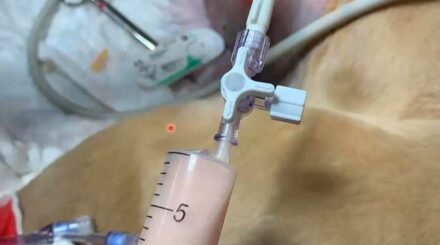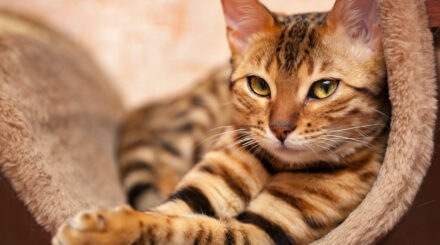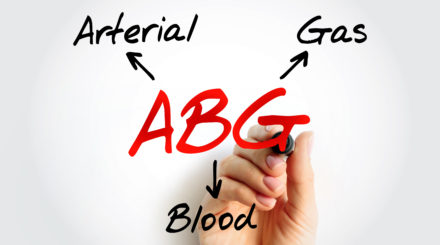A crisis of calcium
Although disorders of calcium metabolism are relatively common in dogs and cats, they are frequently difficult to diagnose clinically. However, improvements in the laboratory assessment of calcium homeostasis have greatly…
Acute kidney injury: Turning a fail into a pass
This webinar on acute kidney injury provides a thorough base for all clinicians dealing with dogs and cats presenting with acute kidney injury. By the end of this webinar the…
Approach to the acute abdomen
Approaching cases with acute abdominal pain can be daunting. However, with structured approach you’ll be able to solve the mystery of acute abdomen and help your patients in no time….
Breathing Room: Understanding and Managing Pleural Space Disease in Dogs and Cats
This webinar session will cover the pathophysiology, diagnosis, and emergency management options for pleural space diseases, including pleural effusion and pneumothorax. Gain practical knowledge and clinical tips, including numerous tips…
Cardiopulmonary resuscitation (CPR) in practice
Cardiopulmonary arrest is condition best managed with a trained team and an organised workplace. There has been a clear association with using standardised guidelines, training and post-arrest review and improved…
Complications in anaesthesia – Avoidance and trouble shooting
Anaesthesia is a routine yet high-stakes aspect of veterinary medicine, where even minor complications can have serious consequences if not anticipated or managed effectively. This practical and informative webinar will…
Cracking the Case of Anaemia – Diagnosis, IMHA, and Transfusion Therapy in Small Animal Practice
Anaemia is a common yet often complex presentation in small animal medicine. This session provides a structured approach to diagnosing and managing anaemia in dogs and cats, combining practical in-clinic…
Dealing with ‘Ethylene Glycol’ toxicity in small animal practice
Ethylene glycol toxicity remains one of the most serious and time-sensitive toxicological emergencies in veterinary medicine. Found in common antifreeze products, this sweet-tasting but deadly substance can cause rapid and…
Dealing with the ‘Chocolate’ Lab: Diagnosis and Management of Chocolate Toxicity in Dogs
Chocolate ingestion is one of the most common toxic emergencies seen in veterinary practice—especially among our notoriously food-motivated Labrador friends. But how do you determine when it’s a true emergency…
Disease of the pleural space in dogs and cats
The pleural space is a common source of disease-causing respiratory distress in dogs and cats. Prompt recognition of this as the likely cause, and rapid targeted stabilisation, is essential for…
DKA… Don’t sugarcoat it!
Diabetic ketoacidosis (DKA) is a serious and potentially life-threatening complications of diabetes mellitus (DM). Patients with DKA are often very ill, their management challenging, and concurrent conditions that can substantially…
Explaining Xylitol: Diagnosing and managing xylitol toxicities in small animal practice
Xylitol toxicity in dogs is a rapidly emerging and potentially life-threatening emergency, often triggered by seemingly harmless human foods like sugar-free gum or baked goods. In this focused and practical…
Feline blood transfusions… As X-Men as it gets!
Anaemia is a common reason for cats to present to our clinics, but the management of anaemia has lots of challenges. Cats don’t like to make things easy! In this…
Fever of unknown origin… Too hot to handle?
Identifying the cause of a fever of unknown origin (FUO) in dogs and cats presents a considerable diagnostic challenge. The diagnostic workup can be frustrating for veterinarians and clients, especially…
Giving You a ‘Raisin’ Not to Eat Mince Pies: Understanding Grape and Raisin Toxicity in Dogs
Grape and raisin toxicity remains one of the most puzzling and unpredictable poisonings in small animal practice. With festive treats like mince pies posing a hidden danger, knowing when and…
Guidewire inserted chest drains
Guidewire inserted chest drains have changed the way that we manage pleural space disease in small animals. They are not as scary as they look. This webinar will hopefully help…
Our journal club sessions are a great way for our Specialists to bring new and interesting scientific papers for discussion with our vtx community. In this session, the theme of…
Our journal club sessions are a great way for our Specialists to bring new and interesting scientific papers for discussion with our vtx community. In this session, the theme of…
Making light of acid base & blood gas analysis
Performing acid-base and blood gas analysis is commonplace with our emergency veterinary patients. In this webinar, we look at assessing pH levels and recognising any abnormalities as well as interpreting…
Managing feline trauma
This webinar on “Managing Feline Trauma” is a culmination of Ashley’s nearly 20 years of experience in ECC. It focuses mainly on initial stabilisation, including how to recognise and manage…





















